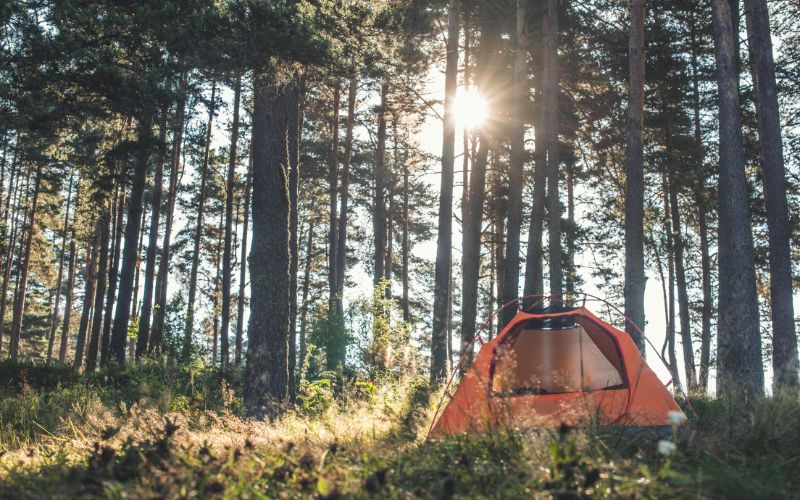The name of the game when camping is to keep things safe while having as much fun as possible.
There are myriad things that could turn your camping experience into a nightmare, but our list of 15 rules and tips will help ensure that you avoid the most common and worst of those pitfalls.
From water and fire safety to avoiding encounters with wild animals and poisonous flora, our list covers almost every eventuality.
Table of Contents
- 15 Tips for a Safer Camping Trip
- 1. Know Before You Go
- 2. Create a List of Essential Items
- 3. Check the Weather Forecast
- 4. Know Thy Gear
- 5. Tell a Friend
- 6. Bring Spares
- 7. Bring a First Aid Kit
- 8. Arrive Early (or At Least Before Dark!)
- 9. Pack and Store Food Safely
- 10. Drink (Water) and Be Merry!
- 11. Water Safety
- 12. Sun Safety
- 13. Fire Safety
- 14. Hiking From Your Basecamp
- 15. Steer Clear of Vicious Vines and Stinging Shrubs
- 5 Must-Avoid Camping Mistakes
- Camping Safety Tips 101
15 Tips for a Safer Camping Trip
1. Know Before You Go
As the old saying goes, safety starts at home.
Before you head on any camping trip, be sure to do your research. Depending on where you are in the world, there are various things you should try to find out:
- Will I have access to water?
- Will there be dangerous wildlife in the vicinity?
- What gear do I need to bring?
- Is there a risk of wildfire? Or flooding?
- Do I need to bring bear spray or a bear canister?
- Is the campsite exposed to the sun or under tree cover?
- Are there poisonous snakes in the area?
- Will there be bugs like mosquitoes, midges, or ticks (carriers of Lyme disease)?
- Is there a place to seek shelter if conditions turn gnarly?
- Are there any potential hazards?
Asking these questions and preparing appropriately should help you avoid the most common camping party poopers.
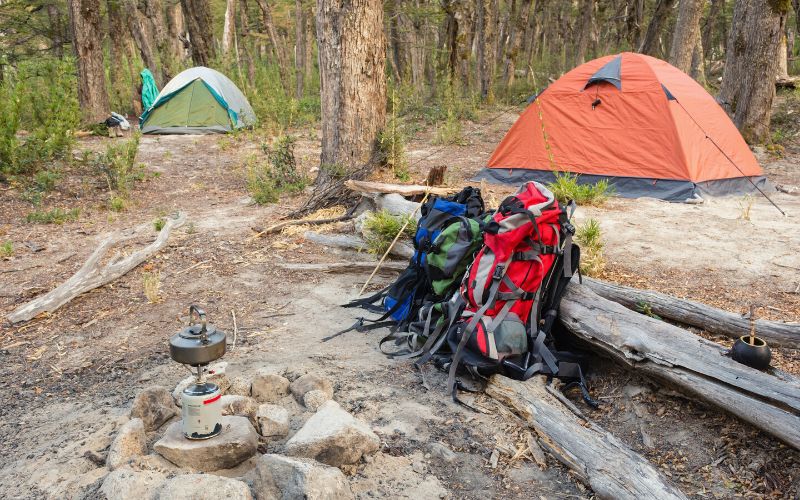
2. Create a List of Essential Items
Crappy weather aside, the thing most likely to ruin any camping trip is forgetting to pack a crucial piece of gear.
To make sure you avoid this, we recommend making a detailed, comprehensive checklist of everything you’ll need. Start with the big four, (sleeping bag, tent, sleeping pad, and backpack), then move on to the ten essentials and personal items like your cell phone and medication.
3. Check the Weather Forecast
This might seem like a no-brainer, but not all campers are entirely diligent. We recommend checking two or three forecasts to get a better picture of what to expect and packing gear that will a) keep you warm and dry or b) keep you cool should temperatures be a little cooler or warmer than expected. Needless to say, this is all the more important when tent camping.
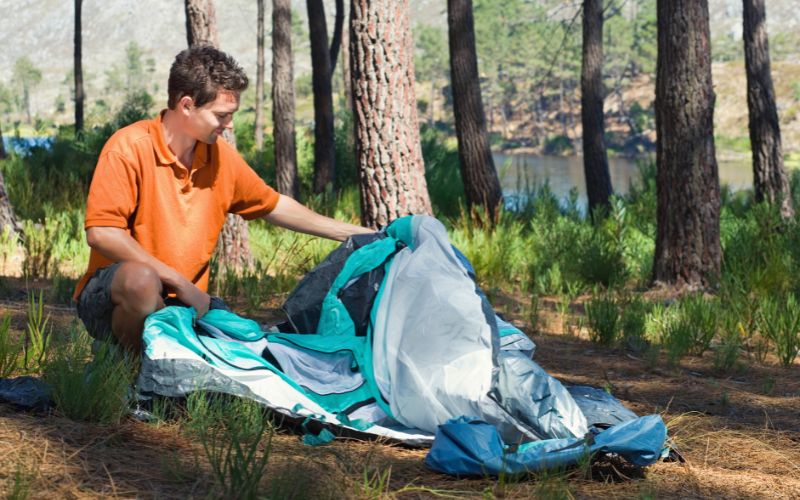
4. Know Thy Gear
Having all the right camping gear is step one in ensuring any camping trip goes smoothly. Step two is learning how to use it.
We recommend doing the following before you set off on a camping trip:
- Practice setting up your tent
- Cook a quick meal on your stove in the yard or at a local park
- Learn the basics of navigating with a map and compass (if hiking)
- Learn how to tie a few useful camping knots
- Learn how to do on-the-spot gear repairs in case any harm should befall your tent, sleeping pad, sleeping bag, or clothing
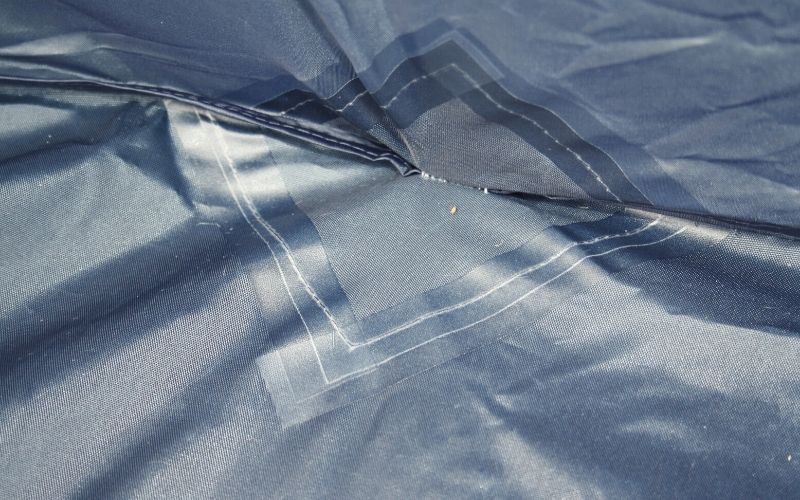
5. Tell a Friend
If you plan on camping in the backcountry, be sure to leave a note with a reliable someone at home with info on where you plan on going, how long you plan on staying, and when they can expect you back. If sh*t goes south, this friend will be able to alert authorities, making it easier for them to find and assist you.
6. Bring Spares
An old army saying holds that “two is one, one is none,” reminding us that it’s always wise to double up on particularly essential pieces of gear. While we’re not recommending you turn your camping trip into a military operation, there’s no harm in ensuring you don’t sell yourself short as long as you can spare the space in your pack.
Some items you might want to double up on include headlamp batteries, matches, gas canisters, gloves, socks, a map, and a compass. Throwing an extra tent peg or two in your pack is never a bad idea either, given their penchant for going AWOL.
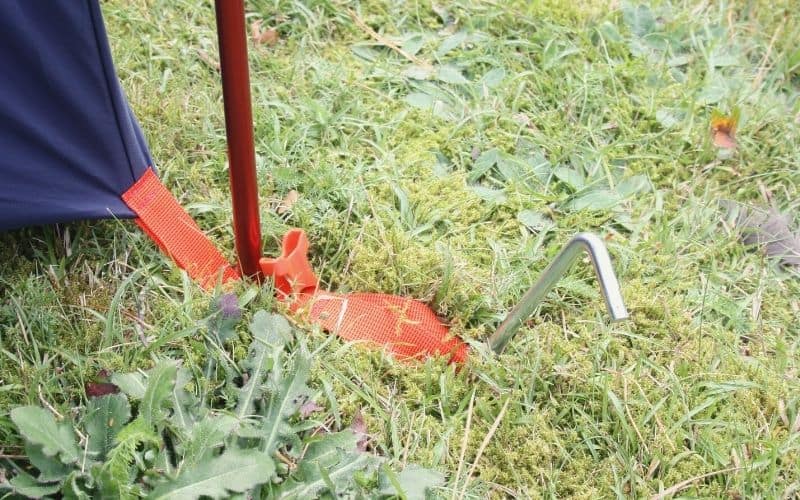
7. Bring a First Aid Kit
A first aid kit should be the first piece of kit in your pack on any camping trip.
In our guide to making DIY hiking and backpacking first aid kits, you’ll find comprehensive lists of supplies you might need for trips of various durations.
For now, here are a few things you’ll want to ensure you keep in your kit:
- Bandaids of various sizes
- Aspirin or ibuprofen
- Insect repellent and antihistamine cream for insect bites and stings
- Antibacterial cream
- Moleskin
- Gauze pads
- Sterile compress
- Antiseptic wipes
- Cotton balls and swabs
- Tweezers
- Scissors
- Safety pins
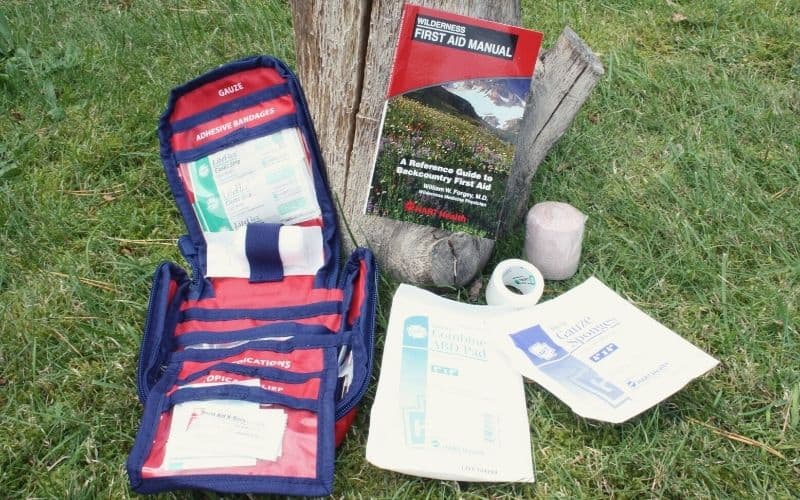
8. Arrive Early (or At Least Before Dark!)
Arriving at your destination at a reasonable hour, whether that be a campground site or out in the stix, will allow you to get the “lay of the land” in daylight. This will let you locate water sources, nearby restrooms, and such like, and let you choose a suitable, safe spot to pitch your tent.
9. Pack and Store Food Safely
While most of us agree that sharing is caring, it’s best to draw a line when it comes to sharing our edibles with wild critters. There are a few reasons why this is the case.
First of all, human food isn’t healthy for all animals and could lead to them developing a (potentially fatal) dependency.
Secondly, becoming habituated to human food makes wild animals more likely to seek it out (and target the food of other campers) in the future.
Thirdly, nobody wants a 3 am wake-up call from a pine marten, raccoon, or bear rummaging through and devouring their grub.
Finally, hunger – if the critters are eating your food, that means you aren’t!
To avoid inadvertent sharing of your eats, follow these food safety guidelines:
- Never leave your food on picnic tables
- Use bear canisters or food storage boxes provided by your campsite if available
- Bring your own scent-proof food bag when wild camping or camping in locations where bear canisters/food boxes aren’t available
- Learn how to hang a bear bag if you’re dispersed camping in the backcountry
- Never leave food in your vehicle overnight and make sure the windows are closed and it’s out of sight during the daytime
- Never leave your backpack unattended when hiking
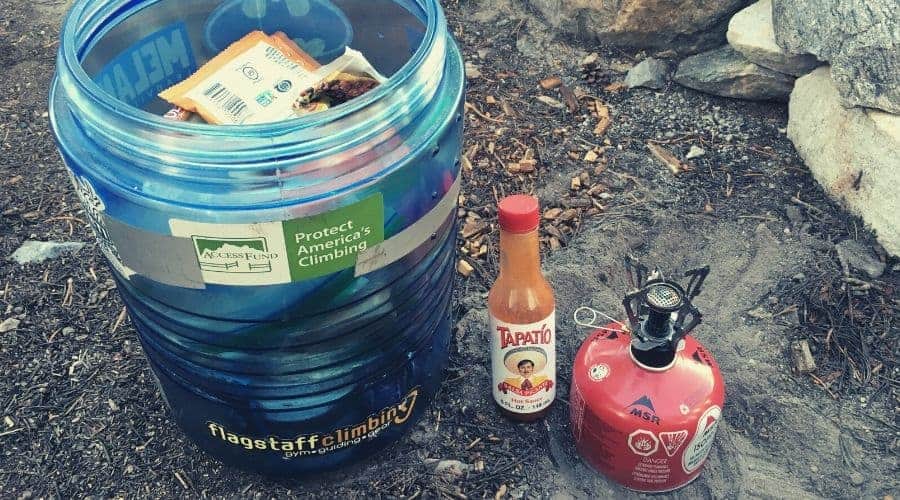
10. Drink (Water) and Be Merry!
The human body’s natural metabolic need for water is amplified whenever we’re exposed to the elements and doing activities that have us working up a sweat, as when camping. Failure to satisfy that need could result in dehydration, which could lead to a wide range of nasty symptoms. These include:
- Thirst
- Headache, fatigue, weakness, irritability, lightheadedness
- Diminished urine output
- Dark, bright yellow, or smelly urine
- Symptoms of shock
- Confusion and disorientation
To avoid dehydration:
- Monitor your fluid intake throughout the day (and do the same for your kids or any other dependents)
- Pack rehydration salts
- Pack water purification tablets so you can drink water from wild sources if your water bottle runs dry
- If heading on a hike, carry enough water to last the duration if there are no water sources along the way
- Increase water intake if participating in any vigorous outdoor activity like hiking, swimming, or cycling
- Make sure your water supply is well-stocked at all times
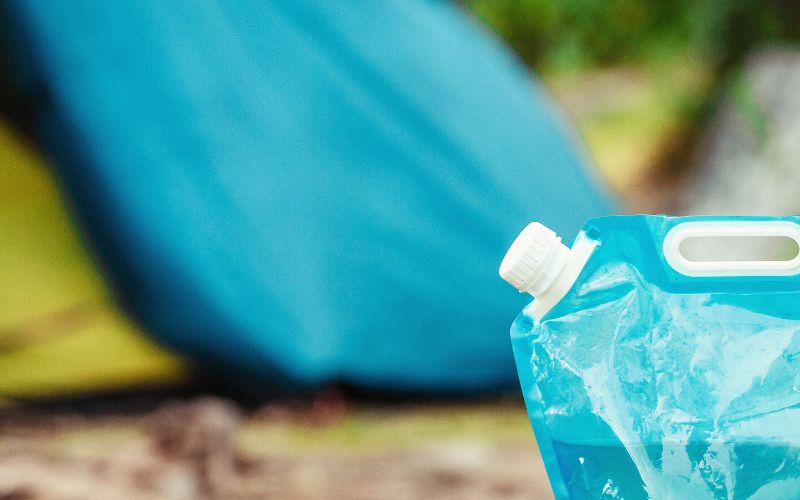
11. Water Safety
Drinking straight from wild water sources like creeks, rivers, and lakes is never a good idea. Lurking within may be multiple bacteria, protozoa, or viruses that could easily spell curtains for your camping trip or even land you in the ER.
Some of the water-borne nasties that have laid low many a hiker in the past include cryptosporidium, giardia, E-coli, hepatitis, and myriad others.
To avoid suffering the same fate, be sure to treat your water with water purification tablets, a UV pen, or a filter. To avoid contaminated food, wash down your edibles with purified water only.
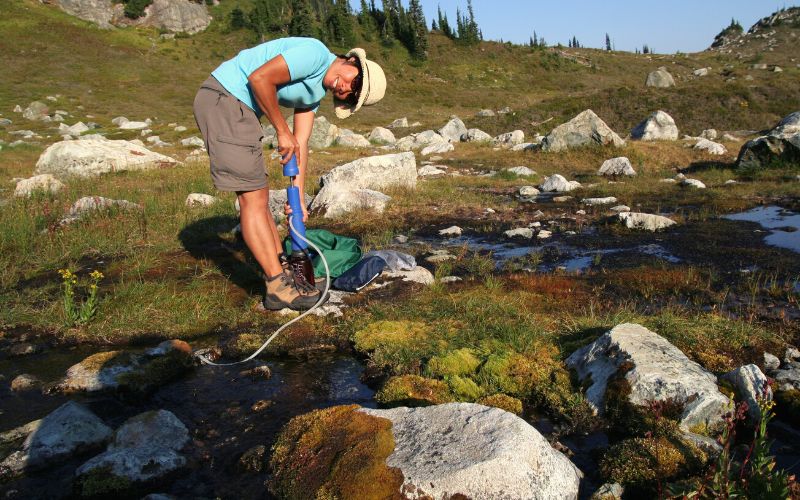
12. Sun Safety
Blue-sky days are, of course, something to be cherished and enjoyed, especially when spending all of your time outdoors on a camping trip. That doesn’t mean, however, that we can throw caution to the wind and take a lackadaisical attitude to weather protection. UV rays, after all, are equally, if not more capable of doing harm than a little bit of rain.
The three main ailments you might experience when exposed to the sun are sunburn, sunstroke, and heatstroke. The best way to avoid all three is simple: take every precaution needed to minimize your exposure to the sun.
Here are a few tips that will help you do so:
- Wear lightweight, light-colored, long-sleeved, and breathable clothing
- Wear a sunhat
- Stay in the shade as much as possible
- Wear high-factor sunscreen and reapply throughout the day
- Collapse your tent body in the morning to avoid it overheating during the day and use your rain fly as a sun tarp in the meantime
- Carry a bandana or buff to protect your neck
- Avoid venturing outside or into sun-exposed areas during the hottest hours of the day
13. Fire Safety
First of all, observe all local restrictions and rules regarding the building or use of campfires. Secondly, if your camping site has fire rings, use these; if not, create your own fire pit to avoid sparks catching on nearby foliage. Thirdly, never leave a fire unattended. And finally, extinguish your fire carefully, making sure all the embers are out, before hitting the hay or leaving camp.
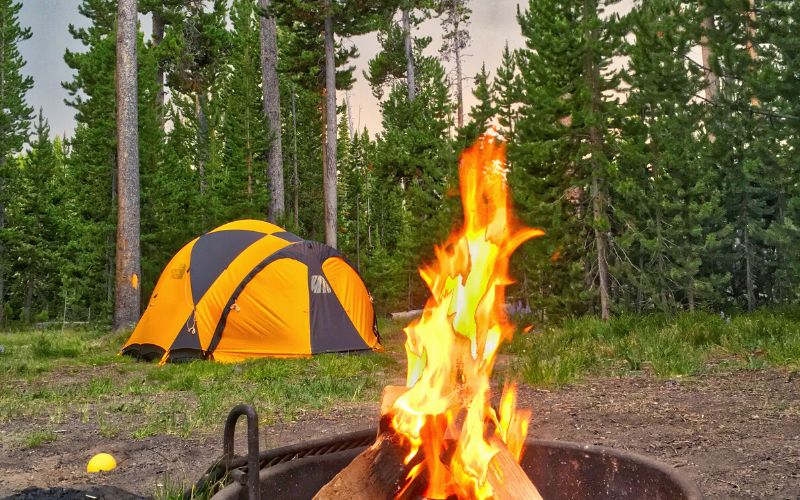
14. Hiking From Your Basecamp
Camping trips that don’t involve a hike or two are a rarity. In our guide to hiking for beginners, we cover all of the safety elements every hiker should be aware of, so this is a good place to start if you haven’t already cut your teeth on the trails.
For now, here are a few essential hiking safety guidelines to remember:
- Pick up a map before you set off
- If you’re venturing further afield, be sure to take a compass and detailed topographic map
- Carry enough water and food to see you back to camp safely
- Don’t bite off more than you can chew
- Give yourself time to finish before dark
- Carry the ten essentials if you’ll be hiking more than a few miles
- Check the weather forecasts
- Wear appropriate clothing and footwear
- As above, let fellow campers know your plans so they or the relevant authorities can assist if you get lost or have an accident
15. Steer Clear of Vicious Vines and Stinging Shrubs
Poison oak, poison ivy, and poison sumac aren’t actually poisonous, but they can cause serious harm nonetheless. This usually takes the form of a mild to severe allergic reaction characterized by swelling and itchy bumps and blisters.
For campers, it’s a good idea to learn how to identify all three of these vines or shrubs, find out if they’ll be present near your campsite, and give them a wide berth if they are.

5 Must-Avoid Camping Mistakes
1. Cooking Inside Your Tent
When the bugs are out, temps are low, or the rain starts falling, nobody wants to leave the safety and comfort of their tent. When it comes to cooking your breakfast or evening meal, however, failing to move a safe distance from your tent is one of the riskiest things you can do.
The reason for this is that the fumes emitted by your stove will become trapped inside your tent, which could lead to carbon monoxide poisoning for everyone inside.
2. Know-How-Free Foraging
Foraging is a fun and rewarding activity, but one that requires a thorough knowledge of what’s safe to eat and what isn’t. Poisonous plants, mushrooms, and berries are found everywhere in the world, and ingesting just a small amount could be fatal. The take-home? If you aren’t 100% certain of what it is, don’t eat it.

3. Pitching Under a Widow(er)-Maker
When setting up your tent, make sure you choose a spot that isn’t under any potential “widow-makers”, i.e. dead or precariously poised branches that could fall onto your tent during rainfall, strong winds, or simply because of decay.
4. Messing With the Wildlife
Contrary to popular belief (and the fantastical tales recounted by certain TV networks and Hollywood movies), wild animals aren’t lurking around campsites waiting to devour the first human they come across. Nonetheless, there are plenty of critters out there that could do you serious harm if not respected.
The general rule is that wild animals want us to mess with them less than we want them to mess with us, so will usually try to avoid human contact.
To give them every chance to do so:
- Never approach wild animals
- Don’t feed them
- Wear a bear bell to warn them of your presence
- Keep your pet leashed
- Store your food safely
If you’re taking your kids camping, be sure to give them a little primer on wild animal safety, and don’t let them wander far from camp without supervision.
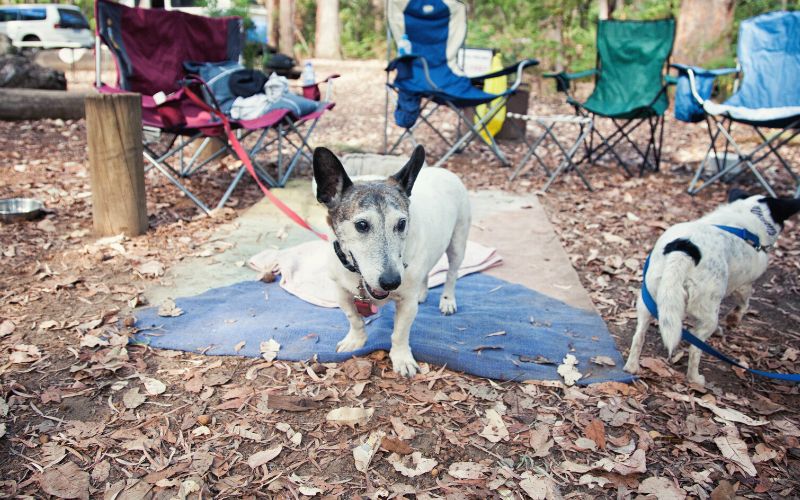
5. Falling
Falling is the leading cause of death in national parks in the US. Nobody means to fall, of course, but that doesn’t mean you shouldn’t take extra precautions to avoid it. This means choosing a hiking route with minimal exposure, giving cliff edges a wide berth, and exercising common sense when hiking in other steep terrains.
Camping Safety Tips 101
We hope the above camping safety tips have been useful and help ensure your future camping trips are happy and healthy ones!
If you liked this post or have any questions, let us know in the comments box below! And if you’d like to share it with your friends, please do!
